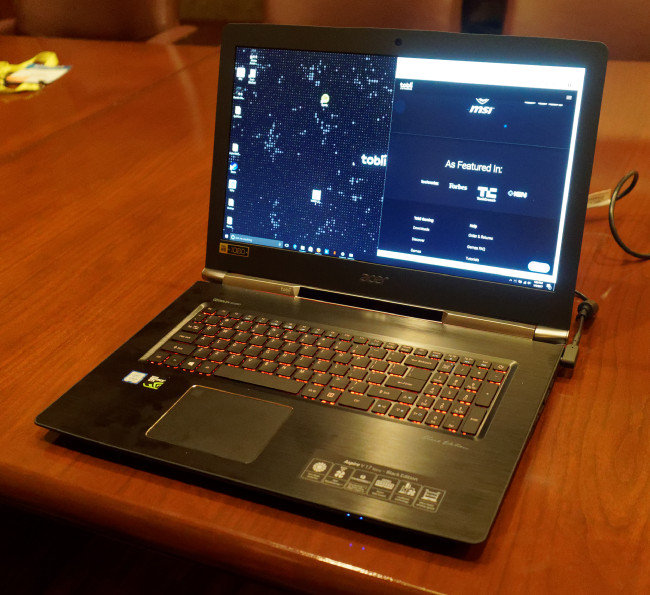We caught up with Tobii in its meeting room where we found the company in a very positive mood as it has been expanding the range of support that it has received. Whereas last year, it had four or five applications (games) with support for its gaze tracking technology, it now has around 50. It has also been finding that companies in the mobile space are getting interested and the company has done a deal for its tracking in an Honor smartphone from Huawei that is shipping in China.
We got a demonstration of the company’s latest technology which seems to have got more accurate, with good tracking (independently) of gaze direction and head movement. The company also told us that it is getting better at tracking gaze on larger displays – previous versions of the sensor and software were limited to around 27″ diagonal displays.
As we reported from IFA, Acer has now announced the first monitor with gaze integrated and a number of additional products will be shown in coming months, the company said.
In addition to the gaming application, Tobii was showing how gaze could be used to improve power consumption. For example, keyboards these days are often illuminated, which uses some power. However, this is a waste of power unless the user is looking at the keyboard. Tobii can detect the part of the keyboard that is being looked at and just light that part when needed. The backlight can also be dimmed if the user is not looking at the display to save power.

Of course, one of the applications of gaze is foveated rendering – controlling the detail on a rendered image to reduce the power needed, especially in VR. We’ve had a number of demos of this technique, but the demo from Tobii was the most seamless – we had a sense of some of the image being less clear at some points, but it wasn’t distracting as it has been on other software that we have seen in the past. With the process enabled, the power taken to render a scene dropped by half. The technique can be used to reduce power, or to boost frame rates or spatial resolution. Tobii claims the performance boost is typically from 30% to 70%.
Tobii told us that the process of optimising the performance while minimising the visual impact is quite complex and needs to take into account a lot of factors in the image. (BR)

